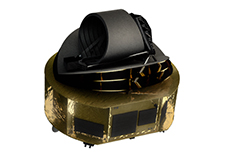 Launch Date – 2029
Launch Date – 2029
Phase C – Final Design & Fabrication
NASA will contribute an instrument to a European space mission that will explore the atmospheres of hundreds of planets orbiting stars beyond our Sun, or exoplanets, for the first time.
The instrument, called the Contribution to ARIEL Spectroscopy of Exoplanets, or CASE, adds scientific capabilities to ESA's (the European Space Agency's) Atmospheric Remote-sensing Infrared Exoplanet Large-survey, or ARIEL, mission.
CASE will reveal the presence of atmospheric aerosols and help characterize cloud composition in exoplanets. CASE is part of ESA's Atmospheric Remote Sensing Infrared Large-Survey (ARIEL), ESA's M4 mission. CASE ensures the participation of the US community in the ESA transiting exoplanet mission. CASE provides a strong footprint for the US community in an exoplanet survey mission that has excellent synergy with JWST. CASE enhances ARIEL science by providing cloud and albedo metrics for all targets. The CASE technology contribution is mature and low risk, and leverages the same detectors and electronics that NASA is already delivering for ESA's Euclid mission.
ARIEL and CASE address the 2010 Decadal Survey question: “What are the characteristics of planetary systems orbiting other stars and do they harbor life?” CASE science objectives are:
The CASE instrument consists of two detectors and associated electronics that contribute to ARIEL's guidance system. CASE takes advantage of the same detectors and electronics that NASA is contributing to ESA's Euclid mission, which will probe deep questions about the structure of the universe and its two biggest mystery components: dark matter and dark energy.
+ Learn more about the CASE Instrument
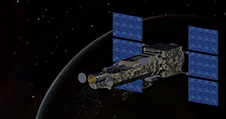 Launch Date – 2028
Launch Date – 2028
Phase B – Design & Technology Completion
EUVST is an international mission to understand the origins of solar activity by observing fundamental physical processes in the solar atmosphere. The primary instruments are a revolutionary EUV spectrometer and slit-jaw imaging system that will observe the solar atmosphere as a coupled system for the first time. This instrument will make major advances through an unprecedented combination of very high spatial resolution (0.4 arcsec/300 km), fast cadence (as high as 0.2 s), and a seamless temperature coverage of solar chromospheric, transition region, coronal, and flare plasma.
EUVST is designed to determine how the interplay of magnetic fields and plasma drives solar activity. The most significant examples of this are atmospheric heating, flares, and coronal mass ejections. Thus, the two primary science goals for EUVST are to:
1) Understand how fundamental processes lead to the formation of the solar atmosphere and the solar wind.
2) Understand how the solar atmosphere becomes unstable, releasing the energy that drives solar flares and eruptions.
+ Learn more at the NASA EUVST Mission Website
+ Learn more at the JAXA EUVST Mission Website
 Launched March 14, 2025
Launched March 14, 2025
Phase D – System Assembly, Intergration & Test, Launch
EZIE is an innovative multi-satellite mission that images the magnetic fingerprint of intense electrical currents flowing in the upper layers of Earth's atmosphere. EZIE's three SmallSats each carry a microwave electrojet magnetogram (MEM) instrument for magnetic field measurements near the source current – revealing the structure and evolution of the electrojets.
The Johns Hopkins University Applied Physics Laboratory (APL) implements EZIE and manages all aspects of the mission. APL provides end-to-end mission development, systems engineering, mission assurance and the science operations center. The Jet Propulsion Laboratory (JPL) will provide the MEM instruments, and Blue Canyon Technologies will provide three spacecraft buses, system integration and testing services, and mission operations services.
+ Learn more at the NASA EZIE Mission Website
+ Learn more at the EZIE Mission Website
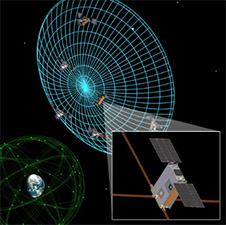 Launch Date – December 2025
Launch Date – December 2025
Phase D – System Assembly, Intergration & Test, Launch
SunRISE opens a new window into the heliosphere, exploring the production and transport of energetic particles from the Sun into interplanetary space, fundamental to understanding space and planetary space weather. Particle acceleration is one of the most pressing questions in Heliophysics. Radio frequency observations provide a well-established remote sensing technique for probing sites of particle acceleration. By observing about the ionosphere, SunRISE provides unprecedented capability to localize and track the telltale radio emissions over the relevant range of solar altitudes.
Science Objectives:
The SunRISE observatory is six spacecraft (S/C) operating as a radio interferometer to produce a synthetic aperture with dimensions ~ 10 km, capable of localizing solar radio burst
+ Learn more at the NASA SunRISE Mission Website
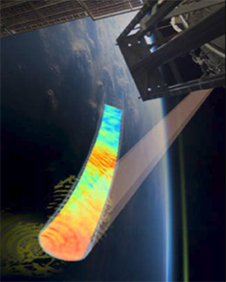 Launched – November 9, 2023
Launched – November 9, 2023
Phase – Operating
The Atmospheric Waves Experiment (AWE) is the first dedicated NASA mission designed specifically to characterize the properties of global mesospheric gravity waves (GWs). AWE will deploy a wide-field-of-view infrared imager, known as the Advanced Mesospheric Temperature Mapper (AMTM), on the International Space Station (ISS) that will characterize the properties of global mesospheric gravity waves (GWs), thereby illuminating the connection between terrestrial and space weather. The Space Dynamics Laboratory (SDL) is providing the instrument hardware, mission management and mission operations center. The science operations center will be developed and operated by Utah State University (USU).
Science Objectives:
+ Learn more at the NASA AWE Mission Website
+ Learn more at the AWE Mission Website
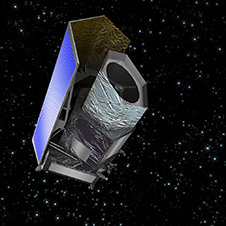 Launched – July 1, 2023
Launched – July 1, 2023
Phase – Operating
Euclid is a planned mission to investigate the profound cosmic mysteries of dark matter and dark energy. Euclid is a European Space Agency mission with important contributions from NASA, including infrared detectors for one instrument and science and data analysis.
Euclid is an all-sky space mission designed to map the geometry of the dark universe. Its primary objectives are to understand the nature of dark energy and dark matter by accurate measurement of the accelerated expansion of the Universe through different independent methods.
The Euclid consortium, with important participation from NASA, will provide science instruments and data and science analysis. JPL will provide the infrared flight detectors for one of Euclid's two science instruments. NASA Goddard will perform detailed testing on flight detectors prior to delivery. The Euclid NASA Science Center is based at the Infrared Processing and Analysis Center (IPAC) at the California Institute of Technology in Pasadena, California. It will support all US investigators, including three teams selected by NASA. Caltech manages JPL for NASA.
Scientific Instruments:
+ Learn more about the Euclid mission
 Launched January 28, 2018 at 7:23pm EST
Launched January 28, 2018 at 7:23pm EST
Phase – Operating
The Global-scale Observations of the Limb and Disk (GOLD) mission of opportunity will perform unprecedented imaging of the Earth's thermosphere and ionosphere from geostationary orbit. GOLD's imager will fly as a hosted payload on a commercial communications satellite provided by SES Government Solutions, one of the world's leading comsat companies. This hosted payload approach is a pathfinder for cost-effective NASA science missions.
GOLD will answer fundamental scientific questions about how the thermosphere-ionosphere (T-I) system responds to geomagnetic storms, solar radiation, and upward propagating tides. GOLD will conduct simultaneous measurements of temperature and composition in the T-I system on a global scale, in the same way that weather satellites provide comprehensive measurements of the troposphere. GOLD's synoptic images of temperature and composition at a half-hour cadence with enable to unambiguous separation of temporal and spatial variability. GOLD's far-ultraviolet imaging spectrograph will perform breakthrough measurements needed to address compelling questions about the global response of the T-I system to external and internal influences and their ties to space weather, comparative planetary atmospheres, and Earth sciences.
GOLD is led by the Principal Investigator, Dr. Richard Eastes of University of Central Florida (UCF). GOLD is a collaboration between UCF, University of Colorado/LASP, SES-GS, NCAR, University of California/Berkeley, NOAA, and others.
+ Learn more at the NASA GOLD Mission Website
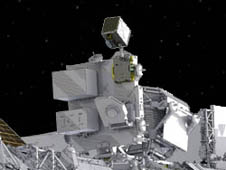 Launched – June 3, 2017 at 17:07 EDT on a SpaceX Falcon 9 rocket
Launched – June 3, 2017 at 17:07 EDT on a SpaceX Falcon 9 rocket
Phase – Operating
The Neutron star Interior Composition ExploreR (NICER) is a NASA Explorer Mission of Opportunity dedicated to the study of the extraordinary gravitational, electromagnetic, and nuclear-physics environments embodied by neutron stars. NICER is exploring the exotic states of matter inside these stars, where density and pressure are higher than in atomic nuclei, confronting theory with unique observational constraints. NICER is enabling rotation-resolved spectroscopy of the thermal and non-thermal emissions of neutron stars in the soft (0.2-12 keV) X-ray band with unprecedented sensitivity, probing interior structure, the origins of dynamic phenomena, and the mechanisms that underlie the most powerful cosmic particle accelerators known. NICER achieves these goals by deploying an X-ray timing and spectroscopy instrument as an attached payload aboard the International Space Station (ISS). Grazing-incidence optics coupled with silicon drift detectors, actively pointed for a full hemisphere of sky coverage, provide photon-counting spectroscopy and timing registered to GPS time and position, with high throughput and relatively low background.
In addition to advancing a vital multi-wavelength approach to neutron star studies through coordination with radio and γ-ray observations, NICER is providing a rapid-response capability for targeting of transients, continuity in X-ray timing astrophysics investigations post-RXTE through a proposed Guest Observer program, and new discovery space in soft X-ray timing science.
+ Learn more about NICER Mission
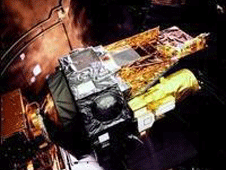 Launched October 17, 2002
Launched October 17, 2002
Phase – Operating
INTEGRAL is providing new insight into the most violent and exotic objects of the Universe, such as black holes, neutron stars, active galactic nuclei and supernovae. INTEGRAL is also helping us to understand processes such as the formation of new chemical elements and mysterious gamma-ray bursts, the most energetic phenomena in the Universe. This will be possible thanks to INTEGRAL's combination of fine spectroscopy and imaging of gamma-ray emissions in the energy range of 15 keV to 10 MeV. INTEGRAL also has an optical camera and X-ray detector, energy range 3 to 35 keV, for simultaneous observations across the EM spectrum.
Gamma-rays are even more powerful than the X-rays used in medical examinations. Fortunately, the Earth's atmosphere acts as a shield to protect us from this dangerous cosmic radiation. However, this means that gamma-rays from space can only be detected by satellites. INTEGRAL is the most sensitive gamma-ray observatory ever launched. It can detect radiation from the most violent events far away and from processes that made the universe habitable.
INTEGRAL is a truly international mission with the participation of all member states of ESA plus the United States, Russia, Czech Republic, and Poland. ESA appointed Alenia Spazio, Italy, as industrial prime contractor, responsible for the design, integration and testing of the satellite. On board, four instruments from teams led by scientists in Italy, France, Germany, Denmark, and Spain are today gathering and analyzing the gamma-rays from space. A Russian Proton rocket successfully placed the spacecraft into orbit. ESA and NASA ground stations are keeping in touch with INTEGRAL.
+ Learn more at the NASA INTEGRAL Mission Website
 Launched – September 6, 2023
Launched – September 6, 2023
Phase – Operating
The X-Ray Imaging and Spectroscopy Mission (XRISM) is a JAXA/NASA collaborative mission with ESA participation, set to investigate X-ray emission from objects in the Universe with high-throughput, high-resolution spectroscopy. XRISM is a powerful orbiting observatory for studying extremely energetic processes in the universe. The NASA/Goddard Space Flight Center and the Institute of Space and Astronautical Science/JAXA of Japan have teamed up to develop a high-resolution X-ray spectrometer for XRISM. The Resolve instrument is an X-ray microcalorimeter: a powerful, low-temperature sensor that measures the energy of each X-ray photon as heat, with extraordinary precision. The instrument utilizes a multi-stage cooling system that will maintain the ultra-low temperature of the microcalorimeter array for more than 3 years. X-rays are focused onto the array by a highly efficient, grazing-incidence X-ray mirror that provides a large collecting area. XRISM will be launched into low-Earth orbit on a H-IIA rocket from the Tanegashima Space Center in Japan.
Spectroscopy is the primary quantitative analysis tool for astronomers, and the high resolving power of Resolve will be used to study high-energy processes taking place in virtually all celestial objects, particularly supernova remnants, galaxies, clusters of galaxies and the environments around neutron stars and black holes.
+ Learn more at the NASA XRISM Mission Website
+ Learn more at the JAXA XRISM Mission Website
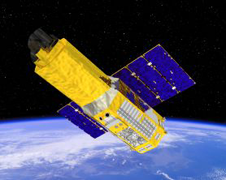 Launched July 10, 2005
Launched July 10, 2005
Phase – Past
Suzaku, formerly known as NeXT, is Japan's fifth X-ray astronomy mission, and was developed at the Institute of Space and Astronautical Science of Japan Aerospace Exploration Agency (ISAS/JAXA) in collaboration with U.S. (NASA/GSFC, MIT) and Japanese institutions. Suzaku covers the energy range 0.2 - 600 keV with the two instruments, X-ray CCDs (X-ray Imaging Spectrometer; XIS), and the hard X-ray detector (HXD). Suzaku also carries a third instrument, an X-ray micro-calorimeter (X-ray Spectrometer; XRS), but the XRS lost all its cryogen before routine scientific observations could begin.
The U.S. Suzaku Guest Observer Facility (GOF) is located at NASA's Goddard Space Flight Center in Greenbelt, Maryland. The GOF is part of the Office of General Investigator Programs (OGIP) in the Astrophysics Science Division (ASD).
The primary responsibility of the U.S. Suzaku GOF is to enable U.S. astronomers to make the best use of the Suzaku mission. To fulfill this responsibility, the Suzaku GOF staff performs such activities as supporting the U.S. side of the Suzaku proposal selection process, distributing usable data to U.S. Guest Observers, helping Guest Observers to analyze their data, and creating the mission archive.
In addition to the tasks listed above, the U.S. Suzaku GOF activities include the development of software, the compilation and production of documentation for that software, and the provision of expert help. All of the U.S. Suzaku GOF's activities involve close collaboration with the Japanese Suzaku team.
+ Learn more at the NASA Suzaku Mission Website
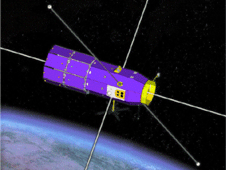 Launched April 16, 2008
Launched April 16, 2008
Phase – Operating
The Coupled Ion-Neutral Dynamics Investigations (CINDI), a mission to understand the dynamics of the Earth's ionosphere. The interaction between electrically neutral and electrically charged gases in the upper atmosphere has a major influence on the structure of the ionosphere.
CINDI will provide two instruments for the Communication/Navigation Outage Forecast System (C/NOFS) satellite. C/NOFS, a United States Air Force (USAF) project, will predict the behavior of equatorial ionospheric irregularities which can cause major problems for communications and navigation systems.
CINDI’s goal is to extend the scope of the C/NOFS program to investigate the physical connections between the ion and neutral gases that lead to and promote the growth of equatorial plasma structure. Understanding these interactions extends far beyond the specific problem of determining when equatorial ionospheric structure will appear and into fundamental understanding of dynamo processes and momentum exchange that are important in all planetary environments where charged and neutral constituents have different mobility.
CINDI will also address two important questions related to ion-neutral interactions and their influence on the generation and evolution of ionospheric structure:
+ Learn more about the CINDI Mission
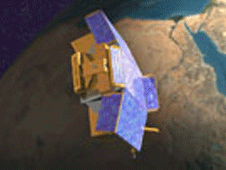 Launched January 12, 2003
Launched January 12, 2003
Phase – Past
The Cosmic Hot Interstellar Plasma Spectrometer (CHIPS) is a University-Class Explorer (UNEX) mission funded by NASA. It launched on January 12, 2003 and carryied out all-sky spectroscopy of the diffuse background at wavelengths from 90 to 260 Å with a peak resolution of /150 (about 0.5 eV). CHIPS data will help scientists determine the electron temperature, ionization conditions, and cooling mechanisms of the million-degree plasma believed to fill the local interstellar bubble.
Scientists believe that the million-degree gas in the “local bubble” is generated by supernovae and stellar winds from hot stars, but want to better understand the origins and cooling of this gas, and apply knowledge of these processes to the study of other galaxies beyond our Milky Way.
Diffuse million-degree plasma is ubiquitous in the Universe. Other than the dense gas in coronae and cataclysmic variables, however, no astrophysical plasma has been observed in the extreme ultraviolet band where the majority of the energy is expected to emerge. As a result, there is significant uncertainty as to the mechanisms by which hot interstellar plasma sheds its reservoir of thermal energy. Spectra from CHIPS will help us determine how the million-degree gas in the Local Bubble cools. These results will find important applications in interpreting X-ray observations of spiral galaxies, modeling of the global characteristics of the interstellar medium, and other areas of astrophysics.
+ Learn more about the CHIPS Mission
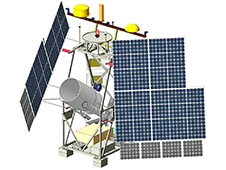 Launched – December 31, 2023
Launched – December 31, 2023
Phase – Past
The Galactic/Extragalactic ULDB Spectroscopic Terahertz Observatory (GUSTO) mission, led by Dr. Christopher Walker, principal investigator from the University of Arizona will use an Ultralong-Duration Balloon (ULDB), launched from Antarctica, to carry a telescope with carbon, oxygen and nitrogen emission line detectors. The unique combination of data will provide the spectral and spatial resolution information needed for Dr. Walker and his team to untangle the complexities of the interstellar medium, and map out large sections of the plane of our Milky Way galaxy and the nearby galaxy known as the Large Magellanic Cloud.
+ Learn more about the GUSTO Mission
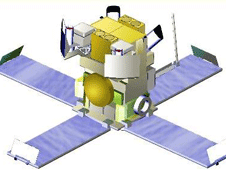 Launched October 9, 2000
Launched October 9, 2000
Phase – Past
HETE-2 is using UV, X-ray and gamma ray instruments to study gamma ray bursts (GRBs). HETE-2 can localize bursts with several arcsecond accuracy, in near real-time aboard the spacecraft. The coordinates of GRBs detected by HETE are distributed to interested ground-based observers within seconds of burst detection, thereby allowing detailed observations of the initial phases of GRBs.
The HETE program is an international collaboration led by the Center for Space Research at the Massachussetts Institute of Technology. Our collaborating institutions include the Institute for Chemistry and Physics (RIKEN), the Los Alamos National Laboratory (LANL), the Centre d'Etude Spatiale des Rayonnements (CESR), the University of Chicago, the University of California, Berkeley, the University of California, Santa Cruz, the Centre Nationale d'Etudes Spatiales (CNES), the Ecole Nationale Superieure de l'Aeronautique et de l'Espace (Sup'Aero), the Consiglio Nazionale delle Ricerche (CNR), the Instituto Nacional de Pesquisas Espaciais (INPE), and the Tata Institute of Fundamental Research (TIFR).
The primary goal of HETE-2 is to determine the origin and nature of cosmic gamma-ray bursts (GRBs). This is accomplished through the simultaneous, broad-band observation in the soft X-ray, medium X-ray, and gamma-ray energy ranges, and the precise localization and identification of cosmic gamma-ray burst sources (GRBs).
The original HETE spacecraft was lost as a result of a launch failure on November 4, 1996.
+ Learn more at the NASA HETE-2 Mission Website
+ Learn more at the HETE-2 Mission Website
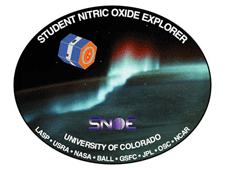 Launched February 26, 1998
Launched February 26, 1998
Phase – Past
Completion Date – 09.30.2000
The Student Nitric Oxide Explorer (SNOE) is a small scientific spacecraft designed, built, and operated by the University of Colorado at Boulder, Laboratory for Atmospheric and Space Physics (LASP).
Its scientific goals are to measure nitric oxide density in the terrestrial lower thermosphere (100-200 km altitude) and analyze the energy inputs to that region from the Sun and magnetosphere that create it and cause its abundance to vary dramatically.
The SNOE spacecraft is a compact hexagonal structure, 36” high and 39” across its widest dimension, that weighs 254 lbs. It was launched by a Pegasus XL into a circular orbit, 580 km altitude, at 97.75 degrees inclination for Sun synchronous precession, on 26 Feb. 1998. It spins at 5 rpm with the spin axis normal to the orbit plane. It carries three instruments: an ultraviolet spectrometer to measure nitric oxide altitude profiles, a two-channel auroral photometer to measure auroral emissions beneath the spacecraft, and a five-channel solar soft X-ray photometer.
SNOE is one of three satellite projects selected for the Student Explorer Demonstration Initiative program (STEDI). STEDI is funded by NASA and managed by the Universities Space Research Association (USRA).
+ Learn more at the NASA SNOE Mission Website
+ Learn more at the SNOE Mission Website
 Launched March 13, 2008
Launched March 13, 2008
Phase – Past
The Two Wide-angle Imaging Neutral-atom Spectrometers missions, TWINS-A and TWINS-B, provide a new capability for stereoscopically imaging the magnetosphere. By imaging the charge exchange neutral atoms over a broad energy range (~1-100 keV) using two identical instruments on two widely spaced high-altitude, high-inclination spacecraft, TWINS will enable the 3-dimensional visualization and the resolution of large scale structures and dynamics within the magnetosphere for the first time. In contrast to traditional space experiments, which make measurements at only one point in space, imaging experiments provide simultaneous viewing of different regions of the magnetosphere. Stereo imaging, as done by TWINS, takes the next step of producing 3-D images, and will provide a leap ahead in our understanding of the global aspects of the terrestrial magnetosphere.
The TWINS instrumentation is essentially the same as the MENA instrument on the IMAGE mission. This instrumentation consists of a neutral atom imager covering the ~1-100 keV energy range with 4°x4° angular resolution and 1-minute time resolution, and a simple Lyman-alpha imager to monitor the geocorona.
TWINS will provide stereo imaging of the Earth's magnetosphere, the region surrounding the planet controlled by its magnetic field and containing the Van Allen radiation belts and other energetic charged particles. TWINS will enable three-dimensional global visualization of this region, which will lead to greatly enhanced understanding of the connections between different regions of the magnetosphere and their relation to the solar wind.
+ Learn more at the NASA TWINS Mission Website
+ Learn more at the TWINS Mission Website